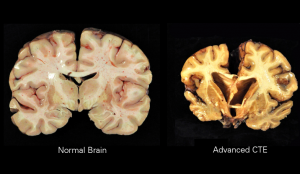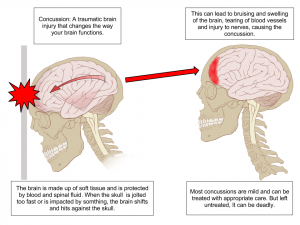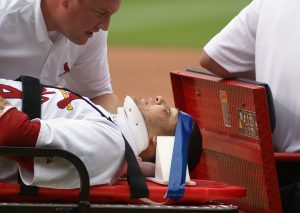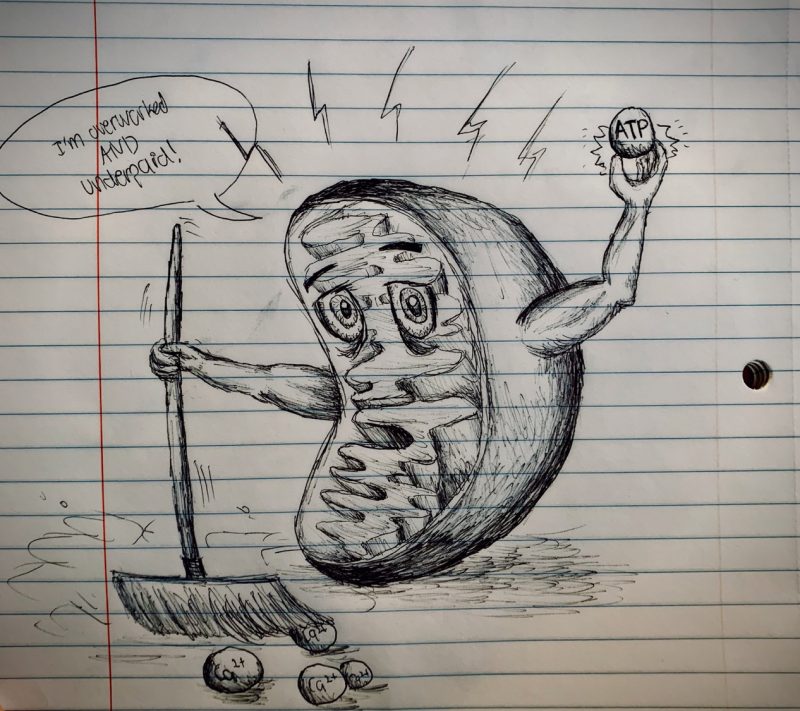It’s simple logic. As with anything else in the body, if your brain is hurt (in an injury such as a concussion), give it a rest. The concept itself seems easy enough to grasp. Given how important the brain is, why would anyone even bother second guessing the time it takes for the brain to rest and recover? Nonetheless, you’ve probably known (or maybe you are) someone who’s brushed off a head injury as a “minor incident” or who’s been reluctant to let a concussion keep them from participating in athletics. The Return-to-Play rules governing concussed athletes are relentlessly stringent, and it’s certainly frustrating to be kept off the court by what many young athletes consider a “pounding headache.” But they are there for a reason. We often are familiar with the immediate affects of suffering a concussion, but what actually goes on up there when the brain is hit with a sudden force? And with ugly truths emerging in recent NFL brain injury studies, what devastating long-term impacts can result from a single blow to the head?
What’s the Fuss Behind the Concussed?

Before we discuss the concussed, some of you might be wondering: what exactly is a concussion? The CDC defines a concussion as “a type of traumatic brain injury—or TBI—caused by a bump, blow, or jolt to the head or by a hit to the body that causes the head and brain to move rapidly back and forth.” It is this sudden motion that can damage the brain and its cells, causing the symptoms we are all too familiar with. We are well aware of what happens during an immediate concussion. Vision gets blurry, memory gets fuzzy, and speech gets slurred. If you are not yet aware, some of the common post-concussion symptoms are:
- Dizziness
- Fatigue
- Anxiety
- Headache
- Sensitivity to light and sound
- Loss of concentration and memory
- Confusion
- Low energy levels, irritability, sleep problems
For a full list of symptoms and more about concussions, visit the Mayo Clinic page here.
But what about a child’s long term health? Many parents of young athletes are familiar with the importance of proper brain development throughout childhood and in the teen years. Recent studies indicate that although long term amnesia or cognitive declines are rare in those who have suffered a concussion, if enough brain damage is sustained (for example, obtaining a second concussion while still recovering from a first) the outcomes can be dire. Long term deficits, such as
- CTE (chronic traumatic encephalopathy, caused by repeated head injury, which can display as the below symptoms)
- Alzheimer’s-like memory loss
- Cognitive decline
might occur in patients when they grow older. A shocking statistic? In a study done on 111 brains of post-mortem NFL players, 110 had CTE – which really sheds the light on just how serious a “simple concussion” can turn out to be. Next, let’s look at the science that actually causes these symptoms and underlies a concussion.

[A concussion is] a type of traumatic brain injury—or TBI—caused by a bump, blow, or jolt to the head or by a hit to the body that causes the head and brain to move rapidly back and forth.
Heads up – What’s Going on Up There?
So, a ball slams into the head, and the brain jolts. What next? The steps that occur in the brain following blunt impact can be summarized as follows:
- Impact stretches cell membranes of brain cells (neurons and supporting cells), damaging them and making the membranes porous
- Chemical gradient disrupted due to pores (K+ out and Na+ in), causing unintentional depolarizations and irregular action potentials.
- Irregular action potentials lead to release of neurotransmitters in a neuron, especially glutamate (a major excitatory neurotransmitter in the brain), and neurotransmitter imbalance results
- Glutamate binds to a molecule, called an NMDA receptor, on the downstream neuron.
- Together, the depolarization and the glutamate binding opens NMDAr, which allows calcium to enter the neuron.
- This overabundance of Ca2+ can set off a variety of chemical cascades. In concussions, it mainly affects the mitochondrion (yes, the “powerhouse of the cell”)
- In an attempt to reset the chemical imbalance between K+ and Na+, a molecule “pump” called an ATPase pumps out 3 Na+ for 2 K+ in. This requires a form of “energy currency,” called ATP, the “power” generated by the mitochondrion.
- The mitochondria work harder to produce more ATP to power this process
- In doing so, the mitochondria deplete energy stores and use too much glycogen
- This causes a state known as “hyperglycolysis,” where too much glycogen is broken down (why concussed patients are often “tired”
- This is also a supply demand problem – during a concussion, there’s decreased blood flow to the brain
- Less blood means less oxygen to the brain, so the mitochondria must rely on anaerobic respiration, generating harmful lactic acid
- The mitochondria also try to contain some of the excess Ca2+ in the meantime
- Bottom line: Mitochondria are overstressed, overworked, and underpaid.

Why is this so detrimental? The ability of a neuron to fire depends on the maintenance of a chemical gradient and ability to send action potentials, which is the means by which neurons communicate. If the chemical gradient of Na+ and K+ is disrupted, as described previously, neurons might struggle to fire, leading to problems in brain function and some of the immediate symptoms listed previously.
In the long term, these overworked, stressed mitochondria produce less ATP than they’d normally be able to. This chronic low-level energy lasts for a while and throughout most of the concussion recovery process, leading to low metabolism and low energy levels as the brain tries to recover. The lactic acid produced (the same stuff that makes your muscles sore after a workout) also might make brain conditions overly acidic (acidosis), which can further prevent chemical gradients from re-establishing, denature/damage proteins, and altogether cause more brain damage. Ultimately, this imbalance can cause structural damage to filaments and other elements of brain cells, and ultimately cell death or “apoptosis” (programmed cell death).
In the case of repeated head injuries and conditions such as CTE, imagine this entire process happening again while the brain is still trying to recover. It is this combination of events that leads the brain to a point where it literally cannot recover – causing long term brain damage.

So what can we do to keep young athletes from suffering brain injuries? We can’t just tell everyone to stop playing football (or any other sport, for that matter). Because concussions have become so relevant in modern day athletics, recent research has gone into developing better gear (such as football helmets) that can reduce, mitigate, or detect the amount of impact a player is receiving. Some prototypic helmets even have impact sensors that can indicate how much force the brain has received, so players can be pulled out when the limit is reached! Moving beyond athletics, technology is constantly being developed to reduce impact during car crashes, accidents, and other potential TBI-inducing situations.
So what do we gain from all this? Hopefully less minor brain injury for our future youth athletes. At the end of the day, the brain is incredibly complex, and this pink, wrinkly organ holds the key to one’s limitless thought and action. But the brain does have its own limits – the brain is just as delicate as it is complex and crucial for one’s survival. At the end of the day, it’s important to recognize when to pull your head out of the game and let the brain work its own magic.
